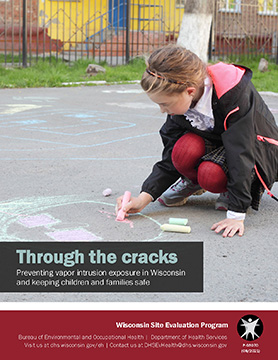Vapor Intrusion Prevention & Partnership Toolkit
A tool for local governments, neighborhood associations and property owners
Former Dry Cleaners - The Hidden Risk
In the 1900s, dry cleaning (waterless cleaning of garments utilizing a chemical solvent) was a common business. In bigger cities, dry cleaners were on almost every commercial block and most small towns normally had one or two. While dry cleaning continues today, fewer dry cleaners remain due to fashion trends and advances in textiles (e.g., wrinkle-free clothing). Locations that formerly operated as dry cleaners have since been remodeled or redeveloped into other businesses, restaurants, apartment buildings and daycares. Though the redevelopment of these spaces is beneficial for the community and economy, many dry cleaners left behind hidden environmental contamination that can affect the health of occupants decades later.
Not Just Dry Cleaners
The Vapor Intrusion Prevention & Partnership Toolkit focuses on vapor intrusion resulting from dry cleaning operations. However, many other businesses used chemicals that can result in vapor intrusion (e.g., operations that used trichloroethylene (TCE) as a metal degreaser). An environmental professional may assist communities and property owners to evaluate sources of vapor intrusion from other sources.Dry Cleaning Contamination & Vapor Intrusion
The dry cleaning industry began long before there were rules to manage its chemical wastes. This includes liquid wastes (wastewater) and solid wastes (sludges and used filters), both contaminated with the chemicals used for the dry cleaning process.
- The soil, groundwater and sewers beneath and adjacent to dry cleaners may have been contaminated through the disposal of the chemical waste into sewers and/or spills and dumping on the property.
- Odorless chemical vapors from the contamination can enter buildings and accumulate in indoor air decades after the dry cleaning operation is gone, both on- and off-site.
This movement of contaminant vapors into indoor air is called vapor intrusion and can present health risks to building occupants.
In addition to vapor intrusion at former dry cleaner locations, groundwater and sewers contaminated by the chemicals can carry contaminants far away from the source, potentially expanding the number of buildings at risk for vapor intrusion.
Contamination in neighborhoods
Dry cleaners were often located directly in neighborhoods throughout cities and towns, making them convenient for their customers to access. This is in contrast to many other businesses that also used harmful chemicals, which were generally not as centrally located.
Historical records, such as old phone books, show that thousands of former dry cleaner locations exist in Wisconsin. Hundreds of these have been investigated and cleaned up as the contamination is discovered through property transactions or refinancing, but the risk is unknown at thousands more where contamination has not yet been discovered and not yet reported to the DNR.
At some locations, the contamination was identified but there are insufficient financial resources to cover the cleanup costs. Oftentimes, dry cleaning may not have occurred at the site for decades and the original owners of the former dry cleaner are no longer around. Current owners and neighbors may be unsuspecting of remaining contamination or potential health risks.
Minimizing the vapor intrusion risk
Preventing exposure to vapor intrusion is something your community can proactively do to protect the health of building occupants at a minimal cost. With input from the DNR, the Department of Health Services created the publication, Through the cracks [PDF exit DNR], which provides recommendations to:
- create an inventory of known and potentially contaminated properties,
- screen and prioritize where prevention measures should be implemented first, and
- find professionals who can recommend preventative measures for different situations, such as installing a vapor mitigation system.
Through the cracks [PDF exit DNR] also includes recommendations for best management practices at sites with potential vapor intrusion concerns.
Worksheet to inventory your community
The Template Inventory [Excel exit DNR] is a free resource from DHS available to anyone completing this project. This file contains detailed instructions and examples for building an inventory of locations presenting potential vapor intrusion concerns.

